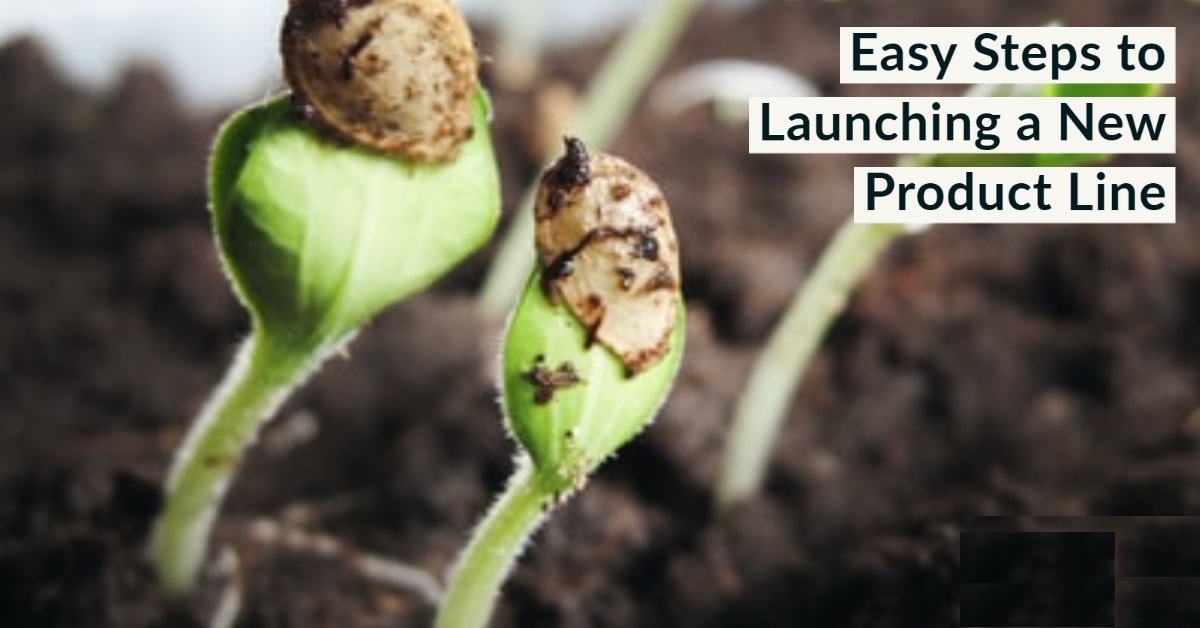Easy Steps to Launching a New Product Line


5mins Read
Studies suggest that 63% of consumers like it when brands offer new products. Moreover, the same study found that 69% of customers expect brand innovation to enhance society.
If you’re seen as an innovator, an industry leader, or a brand that’s committed to regularly dazzling your prospects with brand new offerings, you’re likely to expand your commercial reach, grow your audience, and boost your bottom line.
New products keep you relevant. This is especially true in the fickle world of eCommerce, where consumers can find something new or unusual in an instant. To make your brand stands out, it is advisable that you release a new product from time to time. Unfortunately, according to Harvard Business School research, 95% of new products fail in their first year.
With that in mind, we have written up this blog post to guide you so that your product is part of the 5% that succeeds.
A. Determine Your Target User
Do you want to create something that your existing customers will love or something that will attract new customers? Ideally, your new product will do both. Before you can answer “what,” you must define “who.” Your target audience will guide production, marketing, customer experience, and everything else in a buyer’s journey to get the new product.
Market research is an essential element of developing any new product. Analyze your customers’ most common support questions and complaints to determine what your current offerings lack. Look at your older products’ reviews to see what customers have and haven’t liked about previous releases. Add surveys to order confirmation emails or landing pages to gather additional feedback about your products. Your existing customers are your best sources of information.
Regardless of whether you are primarily targeting existing or new customers, all this research is beneficial. With these insights, you can develop a few buyer personas—a creative process that helps your sales, marketing, and customer service teams to steer a product launch in the right direction.
B. Product Validation
After performing some market research, you’ll be on your way to validating the concept of your product. A great product should answer these questions:
- Who is it for?
- What problem(s) does it solve?
- Why would someone choose this product over a competitor’s?
Your current customers are probably alike to your future ones, so learning what they want and what problems they wish a product would solve will give you an idea of what the market needs.
This step requires asking some deep questions about your audience, your business, and your company goals. Who do you want to serve, and how will your product help them? A validated product has a comprehensive, yet a specific answer to this question.
It’s more than likely that your product is not the only one in the marketplace addressing the same consumer needs, however. A successful product won’t just help your audience—it will also stand out from the competition.
Conduct your research
Little in the ecommerce market is original. Everything is either repackaged or repurposed, which means that your goal should be to solve a specific problem for a certain audience better than anyone else.
Gather your team and develop a research strategy, assigning different people to different roles before coming together and your discoveries.
To get a well-rounded view of the landscape surrounding your niche and gain the knowledge to develop content, communications, and a launch strategy that resonates with your audience and gets noticed, you should the following:
- Get on the various social media platforms or blogs and explore the pages of competitors that have launched similar products or solutions. Identify strengths in their content that you can emulate (in your way of course ) and see if you can spot gaps or weaknesses on which you can capitalize.
- Investigate the pricing and product descriptions of competing products or services and mystery buy items to analyze the consumer journey. From this information, you’ll be able to identify ways you can optimize your pricing, user experience, and promotional strategies to help make your launch as successful as possible.
- Conduct social media polls, consumer surveys, and focus groups, plus drill down into your existing consumer data to gather as much intelligence as you can about your audience's thoughts, feelings, preferences, and pain points.
How Do I Know If a Product is Validated?
Pre-sales are a great way to determine if a product is successfully validated. If you can pitch existing customers on an upcoming product and get them to purchase ahead of time, new customers will be interested at launch, too. Even securing email sign-ups from visitors who want to know when your product will be available is a sign of customer interest.
C. Develop a Go-To-Market Strategy
Once you validate a new product, you’re ready to start manufacturing or building. During the physical development process, you should create your go-to-market strategy.
Get Aligned
Your go-to-market strategy is the plan you’ll use to promote your product at launch. Take the time to get your entire organization aligned on the plan. Everyone from upper management to interns should be on board with the product and the go-to-market strategy. A new product launch takes a lot of time and effort from many teams, so getting a complete buy-in is essential.
Make sure everyone knows their roles and what leadership expects from the product in terms of ROI. Determine the metrics you’ll use to gauge success and the values you’ll deem “successful.” Have managers create key performance indicators (KPIs) for their teams.
Staying aligned throughout a product launch—especially as you develop a go-to-market strategy—is difficult, so lean into the technology.
Appraise Your Limitations and Start Building
No company has infinite resources. Before launch, think about the resources you can put behind a new product launch. Develop a clear budget with everything from staffing needs to paid marketing spend, and hire new employees or outsource work as needed.
From there, create your brand guidelines. You already know your target audiences and the problems your products will solve. Now it’s time to think about how to communicate that message. Develop a voice and come up with some slogans and buzzwords. Start writing ads, social media messages, and sample blog posts so you can figure out what sounds right and what doesn’t. Now is the time to start generating the content, because you’re going to need it soon.
D. set The Pre-Launch Stage
Initiate your go-to-market strategy before your actual product launch. This is how you build hype. Pre-sales are great, but for a product to scale, you’ll need some new customers, too.
A few weeks before product launch, begin releasing the content you created during the planning stage. Videos, blogs, landing pages, and social media ads are time-consuming to produce, but less so to release and promote. With a wealth of content created during the product development stage, you can hit the market hard before product launch.
Your marketing team will know the best channels for your business and product but don’t be afraid to try new channels. Test out TikTok, Reddit, and Pinterest. Pay for affiliate links on well-known publishers. When you’ve already created content, you can afford to experiment. You might just discover a channel that works better than expected.
In your pre-launch initiatives, incentivize customers through discounted pre-orders, free trials, rewards, and other perks. Invite influencers to sample your product and create a review. Social proof is essential for ecommerce businesses and getting that proof before launch can be a huge boom. You want to generate as much buzz as possible.
E. Encourage feedback & testimonials
Today’s consumers trust the opinions, reviews, and testimonials of their peers above anything else. When you get good reviews about your new product, you should reach out to your consumers to publicly thank them and ask them for any feedback they might have for you.
Display positive reviews proudly on your social pages and the online store and gather any feedback from customers that will help you refine, develop, and evolve your efforts to make sure that your next product launch is even bigger – and even better.
F. Start Working on the Next Product
Even the most-recognized brands continue to hone their products and create new ones. In ecommerce, it’s important to create additional value over time. 20% of ecommerce customers will cost more to acquire than the amount they spend on your products. New products are a great way to combat that loss by recapturing lost customers and engaging existing customers.
During the first few months that your new product is on the market, continue to gather feedback about the product. Learn what’s working and what’s not. Does the product solve the problems it aimed to solve? Did it highlight additional opportunities?
The metrics you established during your go-to-market strategy will help you adjust the current launch and prepare you for the next one. Every bit of data is valuable. Tracking the success of a product launch keeps you prepared to pivot or adjust aspects of the current launch, and will inform the next product’s development.
New products that continue to find innovative solutions to customers’ problems keep people engaged and wanting more. New customers may become repeat customers, and loyal customers may become devoted followers.
There is no such thing as a perfect product launch or a fail-proof method. The odds are against every new product. But if you put in the time and effort to create something that addresses a problem that people want to be solved, you’re off to a good start. Follow these steps, trust your instincts, believe in what you have to offer, and let your creativity run wild to make sure your product launch is a roaring success.



















 TrustGuard - PCI Security Scanner
TrustGuard - PCI Security Scanner
